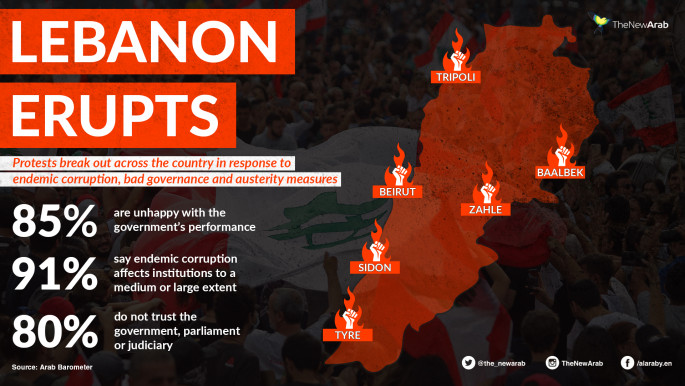Lebanon protests reach the presidential palace after Aoun tells protesters to 'go to moon'
Hundreds of Lebanese protested close the palace of President Michel Aoun in the town of Baabda, outside Beirut, where security forces laid coils of barbed wire across the access road.
Anger amongst protesters reached new heights on Tuesday evening after Alaa Abou Fakher - dubbed Lebanon's first "martyr" - was shot dead whilst Aoun in a televised interview told protesters to leave Lebanon if they don't like the system.
Read more: Why Gebran Bassil is the most reviled politician in Lebanon today
In an angry televised interview, Aoun, 84, said there had been no significant steps forward in forming a new cabinet after former prime minister Saad Hariri stepped down in response to the protests last month.
He also lashed out at protesters, telling them they do not belong in the country if they don't like the current political system.
"Where should I look for them? On the moon?" he said, arguing true independents were scarce in a country, where most people follow a specific political party.
Aoun also criticised the street movement's "lack of leadership", after previously saying he would be prepared to meet representatives to hear their demands.
The president was subject to mockery on social media for his comments.
Sparked on 17 October by a proposed tax on free calls made through messaging apps such as WhatsApp, the protests have morphed into a cross-sectarian street mobilisation against an entire political class that has remained largely unchanged since the end of the country's 1975-1990 civil war.
What started as a spontaneous, apolitical and leaderless popular movement is becoming increasingly organised, with activists taking part in synchronise marches and stunts across the country.
After blocking off roads for days, protesters have switched targeted government bodies most associated with mismanagement and corruption.

Follow us on Twitter and Instagram to stay connected



